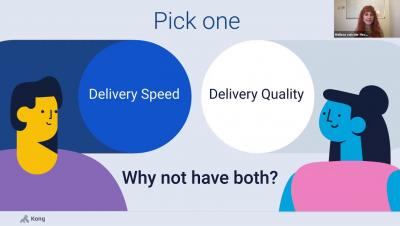Systems | Development | Analytics | API | Testing
API
How to Scale Your API Ecosystem on an Open Source API Gateway
This blog post is part three of a three-part series on how they’ve scaled their API management with Kong Gateway, the world’s most popular open source API gateway. (Here’s part 1 and part 2.) In 2019, our Kong-based API gateway platform hosted about 1,900 proxies and handled 375 million transactions per month. 2020 saw a tenfold increase in both metrics to more than 11,000 proxies and 4.5 billion transactions per month—about 150 million transactions per day.
10 Error Status Codes When Building APIs For The First Time And How To Fix Them
Things don’t always go well when using an API for the first time, especially if you’re a beginner and it’s your first time integrating an API into another system. Often documentation is lacking in terms of errors, since it’s easier to anticipate things going right, than things going wrong. In HTTP, many status codes can give you an idea of what was going on when you called an API.
Comprehensive API Management Platforms: Who Has The Most Features?
Do I Need an API Led Strategy?
API Analytics Across the Developer Journey
Every API product manager wants as many developers as possible adopting and using their APIs. They want them to get to Hello World quickly and have a great developer experience (DX) along the way. Of course, the bigger goal is to be able to tie API success into the larger objectives of the company. For many, despite the best intentions, their metrics are too simplistic, narrow, and based on outdated models of engagement.
How to Monitor API Usage and Performance with the Moesif Plugin for AWS API Gateway
API gateways provide a central point to govern and control access to your APIs, enabling customers and partners to quickly create new experiences. Amazon API Gateway has native support for a variety of compute resources like AWS Lambda or Amazon Elastic Compute Cloud (Amazon EC2).
Conversational AI with Apigee API Management for enhancing customer experiences
The pandemic has accelerated enterprises’ digital transformation investments, notably their efforts to use AI and the cloud to meet rising customer expectations.
Getting Started With Kong's OpenID Connect Plugin
The concept of zero-trust security is relatively simple. In essence, no entity or system should have trust by default. You should assume that any system you are talking to is not trustworthy until you establish otherwise. Within Kong Konnect, one mechanism to apply zero-trust is the OpenID Connect API gateway plugin. In this post and the below recording from our recent Destination: Zero-Trust virtual event, I’ll cover OpenID at a high level and some of its applications and use cases.










